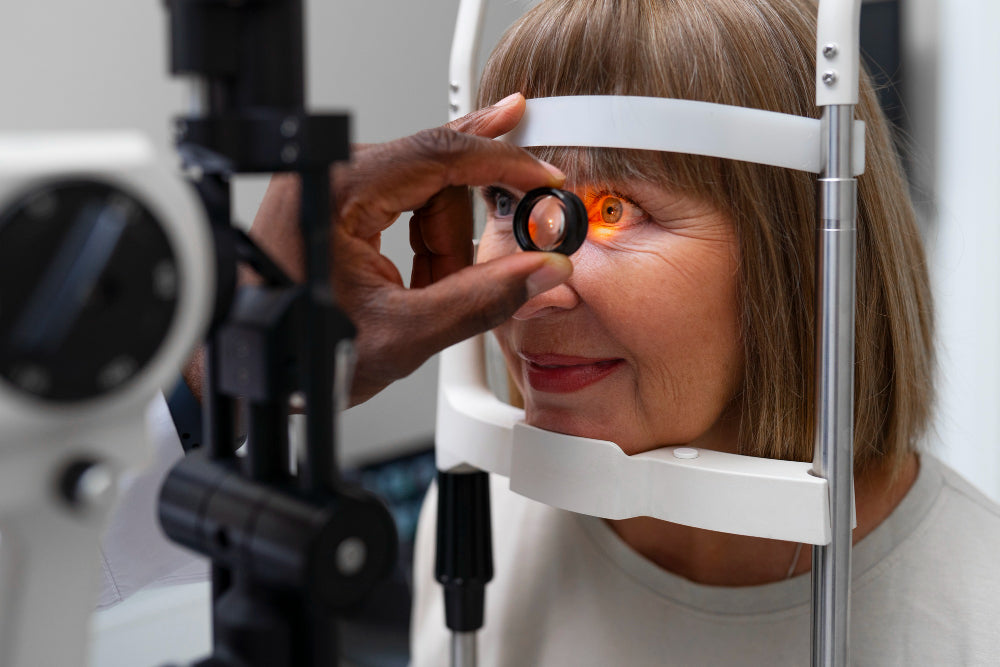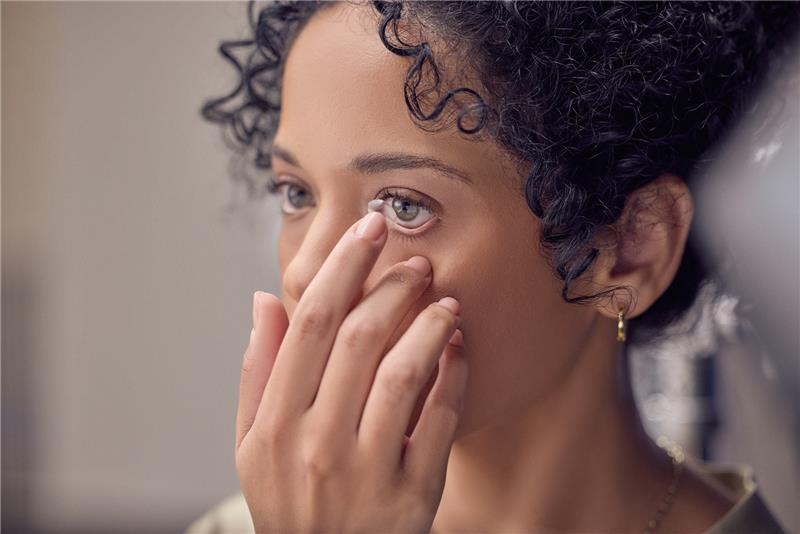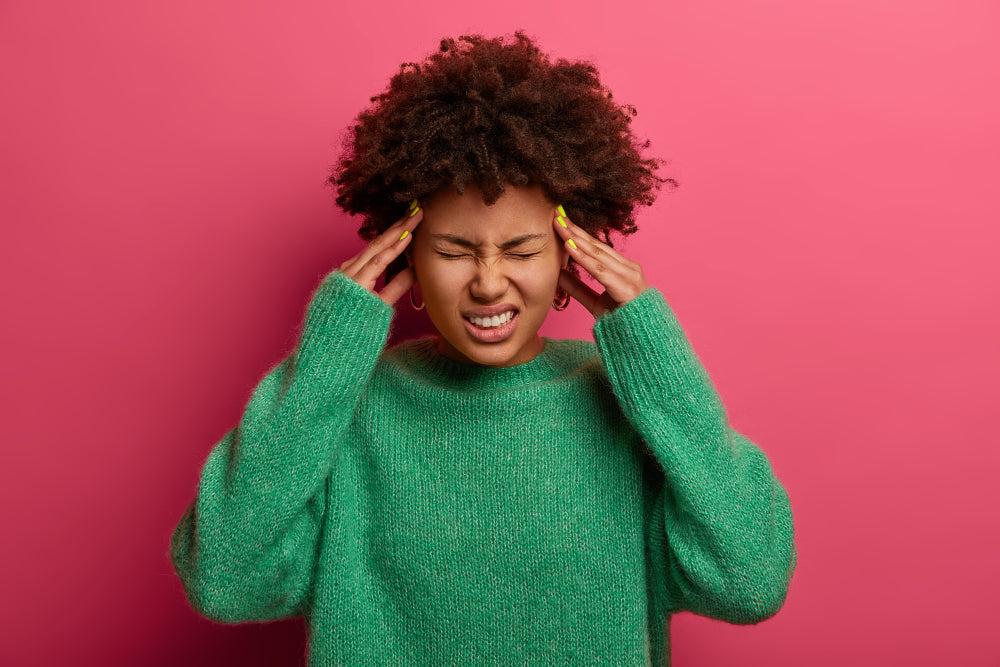Do your eyes ever feel dry and strained after staring at a screen for hours? You catch yourself squinting and wonder, "Can I train my eyes to see better?" The idea of improving vision with simple exercises is appealing. After all, who wouldn't want better eyesight without glasses or surgery?
So, are there any eye exercises that can benefit us? The straight answer is, yes. But the truth is, while eye exercises can't cure major issues like nearsightedness or astigmatism, they can help reduce digital eye strain, improve focus, and even enhance the way your eyes work together.
In this blog, we'll dive into whether eye exercises improve vision, what conditions they may help with, and how to incorporate them into your daily routine.
Understanding Vision and What Affects It
Your eyes aren't just windows to the soul — they're complex systems designed to process light and give you sight. The cornea, lens, and retina collaborate to focus light and create clear images. However, when this process is disrupted, the following issues can occur:
-
Hyperopia (farsightedness)
These conditions are typically caused by structural issues in the eye, meaning they cannot be fixed with exercises.
Vision can also be affected by digital eye strain, prolonged screen time, poor lighting, or even insufficient blinking. This is where eye exercises come into play; they help alleviate strain and improve eyesight to help you see better over time.
Can Eye Exercises Improve Vision? The Science Speaks

Let's get this straight: Eye exercises can't reverse refractive errors like myopia or presbyopia. These conditions are structural and require corrective lenses, contacts, or surgery.
So, do eye exercises really work? It depends. It's easy to fall for exaggerated claims like "eye exercises can eventually eliminate the need for glasses," but the truth is more nuanced. If done regularly, eye exercises can strengthen eye coordinating muscles and help prevent dry eye. However your refractive need for vision correction will not be affected.
Scientific research suggests that eye exercises, often referred to as vision therapy (particularly when guided by eye care professionals) can meaningfully improve certain aspects of visual function.
You might benefit from eye exercises if you:
-
Skip words or lines when reading
-
Cover or close one eye to see better
-
Experience headaches or tired eyes after reading
-
Suffer from dry eye
Eye exercises can help us with:
-
Relieving digital eye strain: Spending hours on screens can cause discomfort, dry eyes, and blurry vision. Simple eye exercises may ease these symptoms.
-
Improving focus and eye coordination: Targeted exercises can enhance the eyes' ability to work together for people with conditions like convergence insufficiency (difficulty focusing on nearby objects).
-
Enhancing eye muscle flexibility: Some routines help strengthen the muscles around the eyes, improving their ability to track movement and maintain focus.
-
Lazy eye (amblyopia): In this case, eye exercises are most effective when started early, especially in children.
-
Crossed or turned eyes (strabismus): Here, they can help improve eye alignment.
-
Tracking issues: These issues can be tackled with eye exercises as they enhance smooth eye movement when reading or following moving objects.
-
Binocular vision problems: Exercising helps both eyes work together more effectively.

A 2012 study published in the Journal of Behavioral Optometry found that vision therapy significantly improved symptoms of convergence insufficiency, especially in children.
While no eye exercise can permanently "fix" structural vision problems, the right set of exercises can improve how your eyes move, focus, and function as a team — ultimately making day-to-day tasks more comfortable and visually efficient.
8 Easy Eye Exercises to Improve Vision and Reduce Strain
Try any of the following tried and tested eye exercises and improve your vision:
1. Palming
Palming is a classic relaxation technique that helps soothe tired eyes and reduce eye fatigue. To perform palming, rub your hands together until they feel warm, then gently cup your palms over your closed eyes, ensuring no pressure is applied to the eyeballs.
Focus on the darkness and your breathing, allowing the warmth to relax the muscles around your eyes. Even a few minutes of palming can help relieve tension and restore comfort, especially after prolonged screen time or visually demanding tasks.
2. Blinking
Sometimes blinking can hurt, but conscious blinking is essential for keeping your eyes moist and comfortable, particularly during extended use of digital devices when your blink rate naturally decreases.
Regular, intentional blinking helps distribute tears evenly and stimulates the oil glands in your eyelids, preventing dryness and irritation. Try blinking rapidly for 10-15 seconds, then close your eyes briefly to let them rest. This simple exercise can refresh your vision and reduce feelings of grittiness or tiredness.
3. Pencil Push-Ups
Pencil push-ups have been widely used to train the eyes to converge or move inward together, which is crucial for reading and other close-up tasks. Hold a pencil at arm's length and focus on the tip or a small letter on the eraser.
Slowly bring the pencil toward your nose, keeping the image single and clear for as long as possible. When it becomes double, move it back and repeat. This exercise strengthens binocular vision and can help with eye coordination issues.
4. Near and Far Focus
Alternating your focus between objects at different distances trains your eyes to adjust quickly and efficiently. Hold your thumb or a pencil about 10 inches from your face. Focus on it for 15 seconds.
Then, shift your gaze to something at least 20 feet away for another 15 seconds before returning to your thumb. Repeat this cycle several times to improve your focusing system's flexibility and reduce eye strain from prolonged near work.
5. Figure Eight
Tracing a figure eight with your eyes is an effective way to enhance eye muscle flexibility and coordination. Select a spot on the floor about 10 feet away and imagine a prominent horizontal figure eight.
Slowly move your eyes along this shape for 30 seconds, then switch directions. This exercise helps your eyes track smoothly, easing tension from repetitive visual tasks.
6. 20-20-20 Rule
The 20-20-20 Rule is a simple but powerful strategy to combat digital eye strain. Every 20 minutes, take a 20-second break and focus on something at least 20 feet away.
This brief pause relaxes your eye muscles, reduces fatigue, and helps maintain moisture on the eye's surface, making it especially valuable for those who spend long hours in front of screens.
7. Brock String
The Brock String is a vision therapy tool that improves eye coordination and tracking. Attach one end of the string to a fixed point and hold the other under your nose, with beads spaced at different intervals.
Focus on each bead in sequence, ensuring you see a single, clear image. This exercise trains your eyes to align and focus together, which is vital for depth perception and comfortable near work.
8. Barrel Card
The barrel card exercise helps train your eyes to converge and maintain alignment when viewing near objects. Hold the card parallel to your nose with colored circles aligned horizontally.
Focus on the circles, starting with those farthest away and moving to the closest, allowing the images to overlap and merge. This practice can reduce double vision and strengthen your ability to keep both eyes working together at close range.
9. Eye Rolling
Eye rolling is a straightforward exercise that relieves tension and improves flexibility in the eye muscles. Sit or stand comfortably, look up, roll your eyes slowly in a clockwise direction for several seconds, then repeat counterclockwise.
This movement stimulates blood circulation, eases muscle stiffness, and can help prevent discomfort from prolonged visual concentration.
10. Visual Scanning and Peripheral Awareness
Engaging in activities like visual scanning, searching for letters or numbers on a page, or focusing on your peripheral vision by identifying objects without moving your gaze can sharpen your visual skills.
These exercises promote better eye movement control, enhance peripheral awareness, and support overall visual performance, making daily tasks easier and more comfortable.
Tips to Improve Overall Eye Health
Improve your eye health naturally by doing simple, productive things. Gently massaging the eyebrows and eyelids will help improve blood circulation and reduce eye strain. To keep your eyes healthy, maintain proper hygiene by gently washing your eyelids daily with Optase Foaming Soap, available from VisionSourceRio.com.
Additionally, ensure you're getting enough vitamin A in your diet. It plays an integral role in maintaining clear vision and preventing eye dryness and discomfort.
Pro Tip: Eye exercises should be part of a broader strategy for eye health, including regular checkups, proper lighting, and screen breaks.
How to Incorporate Eye Exercises Into Your Routine

Eye exercises don't have to take up much time. Here's how to make them part of your day:
-
Start Small: Begin with one or two exercises, like the 20-20-20 Rule, during work breaks.
-
Pair With Daily Habits: Do palming while brushing your teeth or figure 8 tracing during TV commercials.
-
Create a Screen-Friendly Workspace: Adjust your screen height, reduce glare, and ensure proper lighting to complement your exercises.
Debunking Myths About Eye Exercises
There's a lot of buzz around eye exercises, but not everything you hear is rooted in science. Let's break down some common myths:
-
Eye exercises can cure nearsightedness or astigmatism.
These issues are caused by the physical shape of your eye or cornea, which exercises cannot change. Glasses, contacts, or surgery are still necessary for correction.
-
You don't need glasses if you do eye exercises.
While exercises may improve eye coordination and reduce strain, they do not correct refractive errors. You'll still need corrective lenses for clear vision.
-
All eye exercises are scientifically proven.
Some approaches, like the Bates Method, are controversial and lack strong scientific backing. Always consult an eye care professional before committing to any program.
-
Eye exercises can prevent age-related vision loss.
Conditions like presbyopia, macular degeneration, and cataracts are linked to aging and biological changes in the eye. Exercise cannot prevent these, though it may ease eye fatigue.
-
Doing eye exercises daily guarantees better vision.
Consistency can help with specific issues like eye coordination or fatigue, but improved vision is not guaranteed unless the exercises address a diagnosed functional problem.
-
Eye exercises can improve your eyesight overnight.
Like any therapy, vision improvement (if any) takes time and is usually subtle. Quick fixes just aren't realistic.
-
Everyone needs to do eye exercises.
Not everyone benefits from them. They're most helpful for people with specific visual issues diagnosed by an optometrist.
When to See an Eye Doctor

Eye exercises are helpful but not a substitute for professional care. Consult an optometrist if you experience:
-
Persistent blurred vision.
-
Frequent headaches or eye pain.
-
Sudden vision changes.
Pro Tip: Regular eye exams (ideally once a year) are essential for detecting severe conditions like glaucoma or macular degeneration early.
Frequently Asked Questions
How often should I do these eye exercises for best results?
For best results, most eye exercises can be done daily, especially if you spend long hours on screens or experience regular eye fatigue. Some routines, like the 20-20-20 Rule, are designed for frequent breaks throughout the day, while others, such as palming, eye rolls, and focusing exercises, can be repeated multiple times every day, depending on your needs and comfort. Consistency is key. Regular practice helps relieve strain and keeps your eyes feeling refreshed.
Are there any specific eye exercises for people with myopia?
While eye exercises will help reduce eye strain and improve comfort for people with myopia, they are unlikely to reverse or significantly improve nearsightedness. However, exercises like near and far focusing, palming, and eye rotations can help maintain eye flexibility and comfort. It's important to note that these exercises support eye health but do not replace corrective lenses or medical advice for myopia.
Can these eye exercises help with dry eye syndrome?
Yes, specific eye exercises, especially conscious blinking and palming, can help alleviate symptoms of dry eye syndrome. Blinking helps spread tears and lubricate the eyes, while palming can relax the eye muscles and reduce discomfort. Regular breaks from screens and practicing these simple exercises can make your eyes feel less dry and more comfortable.
What are the benefits of combining multiple eye exercises in one session?
Combining different eye exercises in a single session targets various aspects of eye health, such as muscle strength, flexibility, focus, and relaxation. This holistic approach can relieve eye strain, improve coordination, and enhance overall visual comfort. Mixing exercises like palming, focusing, blinking, and figure eights ensures that all parts of your visual system get attention, making your routine more effective and enjoyable.
Are there any risks or side effects associated with these eye exercises?
Most eye exercises are safe when done gently and in moderation. However, overdoing them or performing exercises incorrectly may cause temporary discomfort, eye fatigue, or headaches.
If you have an existing eye condition like severe myopia, hyperopia, or an infection, it's best to talk with an eye care professional before starting a new routine. Always listen to your body — if an exercise causes pain or significant discomfort, stop and seek professional advice.
Can you strengthen your eye muscles?
Yes, but like with any muscle, continued exercising is required. While some exercises like pencil pushups can hold for a little while without repeating, eventually they will need to be repeated. Reps help! Associate these exercises with routine tasks and they will become a routine part of your day.
Eye muscles are naturally strong and designed for constant use. Unless recommended by an eye care professional, these exercises generally don't provide significant improvement.
Wrapping Up: Can You Train Your Eyes to See Better?
The answer is yes — but only to an extent and for specific conditions. Eye exercises can be useful for improving vision, but they can't solve every eye problem.
While they can't cure refractive errors or other severe eye conditions, they can help reduce digital eye strain, improve focus, and enhance eye comfort.
If you spend long hours on screens or struggle with tired eyes, these exercises can make a noticeable difference in your day-to-day comfort. But for long-term vision health, pair them with proper nutrition, UV protection, and regular eye exams.
When it comes to how to exercise your eyes, some doctors can provide guidance.
Take Better Care of Your Vision

At Vision Source Rio and Vision Source Heights, we believe in helping you see a brighter future — literally and figuratively. Contact us for more tips on health and wellness or to learn about our products and services.
It's also important to see an eye care professional regularly for comprehensive exams to ensure there are no underlying issues with your vision. Schedule your visit today to learn more about how to improve your eyesight.
Take care of your eyes — they're the only pair you've got!






